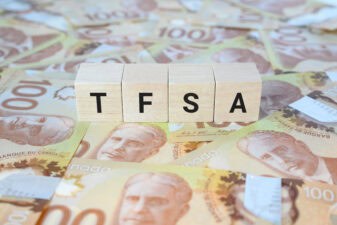The surging loonie has been one of the top stories over the past several months—it plunged from a high of 1.46 in January to 1.26 (one U.S. dollar equals $1.26 Canadian dollars).
But over the past three months, the loonie has outperformed all the G10 Nation currencies against the U.S. dollar. The surge in the loonie is the result of rising oil prices and the market moving past the idea of a potential Bank of Canada rate cut. The end result is that speculators are now more long than short the Canadian dollar.
Going forward, however, many analysts see this changing. Macquarie, for example, sees the Canadian dollar falling to US$0.59 over the next few years, meaning the trend for the Canadian dollar will be down. Here’s why the Canadian dollar could be headed downwards and what it means for your portfolio.
Why the Canadian dollar has little strength left
In a recent BNN interview, John Johnson, the chief strategist at Davis Rea, claimed that the Canadian dollar could possibly rise to a high of US$0.90 before falling to a long-term low of US$0.55 cents. This view is shared by Macquarie, and the basic idea is that the days of the Canadian dollar trading at parity with the U.S. dollar (like it did back in 2010-2013) are now over.
Even over the short term, it is very likely the Canadian dollar will see further weakness. Not only is the U.S. dollar likely to appreciate in the near term as the Fed will likely have one rate hike this year (which is not priced in by the market), but the Bank of Canada also has an interest in keeping the Canadian dollar weak.
A weak Canadian dollar helps Canadian exports become more competitive (especially firms that export to the U.S.). Canadian products basically go on sale as the Canadian dollar weakens, and this weakness is an important aspect of strengthening Canada’s non-energy sector. It is for this reason that the Bank of Canada recently stated that non-energy exports are expected to be weaker because of the recent strength in the Canadian dollar, and that further strength could harm Canada’s attempt to switch from commodity exports to services and manufacturing.
In other words, since the oil boom is now over, Canada will need a weaker currency to stay competitive in the North American supply chain. The massive rally in the loonie that occurred during the 2000s was largely due to a global commodities boom that saw rising oil prices and increased investments in oil and gas.
Going forward, the Bank of Canada sees the commodity sector share of the economy equaling levels that it was at before the boom in commodities. It is important to note that before the commodities boom, the Canadian dollar hit a low of US$0.62, and, since the 1970s, was almost always in a steady decline against the U.S. dollar.
What it means for your portfolio
Several names benefit from a weaker Canadian dollar, especially names that have U.S. operations but are based in Canada and report in Canadian dollars. Earnings from U.S. operations will receive a boost when translated back into Canadian.
On the other hand, names that earn the majority of their earnings in Canadian dollars but have a high percentage of U.S. costs will suffer in this environment. This may include airlines such as Air Canada, which pays for fuel in U.S. dollars.
An example of a name that would benefit from a falling Canadian dollar would be Toronto-Dominion Bank (TSX:TD)(NYSE:TD). TD had 36% of its revenue come from its U.S. retail segment as well as from its ownership stake in TD Ameritrade in Q1 2016.
TD is also unique among the Canadian banks in that it is well insulated from various negative economic factors that could create pressure on the Canadian dollar, like weak commodity prices or a slowing housing market. TD has some of the lowest exposure to oil and gas loans and Alberta of its peers, and the bank has a low exposure to uninsured mortgages in Ontario and B.C.







